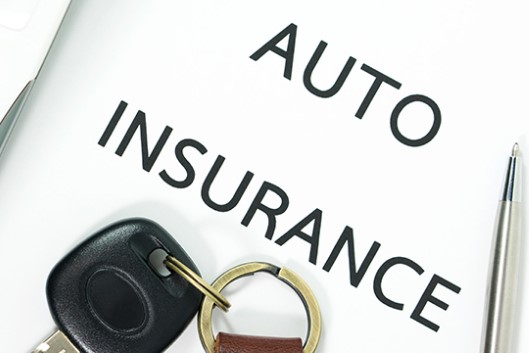Auto insurance is a crucial aspect of responsible car ownership. It provides financial protection in case of accidents, theft, or other unforeseen events. However, navigating the world of auto insurance can be complex, especially when it comes to understanding quotes.
What are Auto Insurance Quotes?
Auto insurance quotes are estimates of how much you can expect to pay for coverage based on various factors such as your driving history, age, location, and the type of coverage you need. They are provided by insurance companies to help you make informed decisions about your coverage options.
Factors Affecting Auto Insurance Quotes
Several factors influence auto insurance quotes, including:
Driving Record: Your driving record plays a significant role in determining your insurance premium. Drivers with a clean record typically pay lower premiums compared to those with a history of accidents or traffic violations.
Age and Gender: Younger drivers, especially teenagers, tend to pay higher premiums due to their lack of driving experience. Additionally, statistics show that male drivers are more likely to be involved in accidents than female drivers, which can impact insurance rates.
Vehicle Type: The make and model of your vehicle also affect your insurance premium. Cars with high safety ratings and lower repair costs typically have lower insurance rates.
Location: Where you live can impact your insurance rates due to factors such as crime rates, traffic congestion, and weather patterns.
Coverage Options: The type and amount of coverage you choose will directly impact your insurance premium. Basic coverage typically costs less than comprehensive coverage, which provides additional protection against a wider range of risks.
How to Get Auto Insurance Quotes
Obtaining auto insurance quotes is a straightforward process:
Research Insurance Companies: Start by researching reputable insurance companies in your area.
Provide Necessary Information: When requesting a quote, be prepared to provide information about yourself, your vehicle, and your driving history.
Compare Quotes: Once you receive quotes from multiple insurers, take the time to compare coverage options, deductibles, and premiums.
Consider Discounts: Many insurance companies offer discounts for factors such as safe driving habits, bundling policies, or installing safety features in your vehicle.
Review Policy Details: Before making a decision, carefully review the details of each policy to ensure it meets your needs and budget.
Tips for Saving on Auto Insurance
While auto insurance is essential, it doesn’t have to break the bank. Here are some tips for saving on your auto insurance premiums:
1. Maintain a Clean Driving Record
One of the most effective ways to keep your insurance rates low is to maintain a clean driving record. Avoid accidents and traffic violations whenever possible, as they can lead to higher premiums.
2. Choose a Higher Deductible
Opting for a higher deductible can lower your insurance premium. Just be sure you can afford to pay the deductible out of pocket in case of an accident.
3. Take Advantage of Discounts
Many insurance companies offer discounts for various reasons, such as bundling policies, having a good driving record, or completing a defensive driving course. Be sure to inquire about available discounts when obtaining quotes.
4. Drive a Safer Vehicle
Vehicles with high safety ratings and advanced safety features often qualify for lower insurance rates. Consider purchasing a car with features such as anti-lock brakes, airbags, and electronic stability control.
5. Shop Around
Don’t settle for the first insurance quote you receive. Take the time to shop around and compare quotes from multiple insurers to ensure you’re getting the best deal possible.
Navigating the world of auto insurance quotes can be overwhelming, but with the right information and guidance, you can make informed decisions that protect both you and your vehicle. By understanding the factors that affect insurance rates and implementing money-saving strategies, you can secure the coverage you need at a price you can afford.
Understanding Auto Insurance Coverage Options
When it comes to auto insurance, there are several coverage options available to suit different needs and budgets. Understanding these options is essential for making informed decisions about your coverage.
1. Liability Coverage
Liability coverage is the most basic type of auto insurance and is required in most states. It covers damages to other people’s property and medical expenses for injuries sustained by others in an accident where you are at fault.
2. Collision Coverage
Collision coverage pays for damages to your vehicle in the event of a collision with another vehicle or object, regardless of fault. This coverage is especially important if you have a newer or more expensive vehicle.
3. Comprehensive Coverage
Comprehensive coverage protects your vehicle against non-collision-related damages, such as theft, vandalism, fire, or natural disasters. It provides peace of mind knowing that your car is covered in various scenarios.
4. Personal Injury Protection (PIP)
Personal Injury Protection, or PIP, covers medical expenses and lost wages for you and your passengers regardless of who is at fault in an accident. It is required in some states and optional in others.
5. Uninsured/Underinsured Motorist Coverage
Uninsured/Underinsured Motorist Coverage provides protection in case you are involved in an accident with a driver who does not have insurance or does not have enough coverage to pay for damages and medical expenses.
6. Gap Insurance
Gap insurance covers the difference between what you owe on your car loan or lease and the actual cash value of your vehicle if it is totaled in an accident. It is particularly beneficial for drivers who owe more on their vehicles than they are worth.
Auto insurance is a vital aspect of responsible car ownership, providing financial protection in case of accidents, theft, or other unforeseen events. By understanding the various coverage options available and how they work, you can make informed decisions that protect you and your vehicle on the road.

